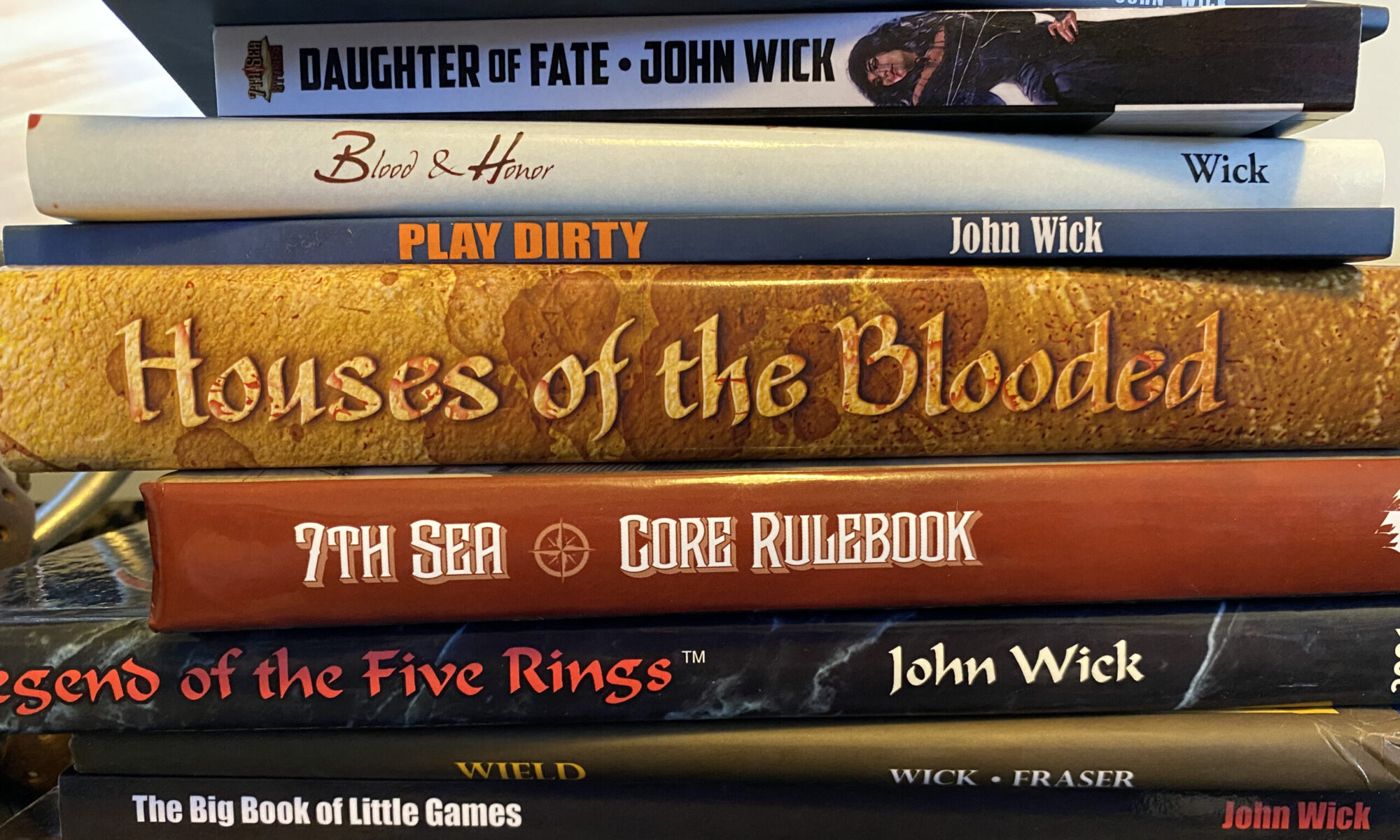Black
“I am veiled by my shame.”
For the ven, wearing black is a symbol of shame. The ven word dulla (doo-EE-ah). Best translated as “veiled.” You may also translate it as “invisible.”
Criminals wear black. And no-one speaks to them. No-one helps them. No-one pays attention when they’re being mugged.
Dulla.
Nobles hire personal guard. Personal guard do not use swords. They use spears. To hide their identity–and their shame–they wear masks and black robes. At parties, everyone ignores them. No need to point out another ven’s shame. He’s already being punished enough. Mercy is a virtue, after all.
Enemies deserve no mercy, but that’s for revenge.
So, no black. Sure, you can have black boots and black gloves. That’s fine.
Red
“Get out of my way.”
Red is the color of passion, the color of romance, the color of revenge.
Romance. Revenge.
In the ven language, romance and revenge are the same word, differentiated only by stressing different syllables. The word itself means “obsession.” Red is its color.
Wearing red indicates to others that you have declared revenge or romance. Or both. We’ll talk about romance and revenge in a moment or two, but for right now, what you need to know is this. Nothing stands in the way of revenge or romance. No law, no ven.
Nothing.
Grey
“Tears are not enough.”
Grey is the color of mourning, but for the ven, death has a deeper, more tragic meaning. For most human cultures, we assume an afterlife. The dead are not truly gone, only waiting for us on “the other side.” But for the ven, death is the End. The ven do not believe in a soul or an afterlife. Solace, at least, holds some kind of promise, but death holds no promise at all. See Death for more information on grief and mourning.
Green
“Spring is in my veins.”
For the ven, green is a color of youth. It is the color of spring, vigor, lust, and strength. Pillow books also use it to symbolize characters who are particularly naive. It is also associated with generosity.
The young have yet to learn the blessings of selfishness.
It is also the color of sincerity, renewal and rebirth. Because it represents renewal, the ven also wear green when seeking forgiveness, giving it a strong association with regret.
To understand we have done wrong, we must put aside what we think and remind ourselves of what we know.
Blue
“I want to know.”
Blue is the color of wisdom. As wide is the sky, so is all a child has to learn. Blue and green are common color combinations.
I have learned much, but there is still much more to learn.
Both male and female children wear blue. Older ven wear deep blue robes symbolizing their experience and knowledge. The deeper the color, the greater the wisdom. As the sun reaches the west, so grows darker the sky.
Wearing blue—especially darker colors—invites questions and debate. The color also communicates “I want to learn.” At ven parties, I imagine seeing rooms filled with ven wearing blue, all in various hues and shades, debating all kinds of topics. Of course, choosing which hue to wear is important. Safe to wear a lighter color than you think you deserve to wear. Then again, who ever accused the ven of being safe?
Lavender
“Entertain me.”
Lavender is the party color. Enjoyment. Delight. Not as intense as red (see above), purple is the color of idle enjoyment. Theater seats fill with lavender. Reclining in parlors. Whimsy. Foolishness. Simple pleasures.
An undemanding color. Disarming. I am playing the game, but not for keeps.
White
“I am ready.”
Solace is the inevitable. Ven wearing white are preparing for solace. A symbol of serenity and patience, those who wear the color of solace are ready for their end.
Wearing white can also symbolize that a beloved relative or friend is passing into solace (or has already passed). Doing so shows your thoughts are with them as they enter eternal slumber. Some mystery cults encourage their members to wear white from an early age, signifying the long preparation for the great sleep. Others weave small white fabrics into their clothes as they age, eventually replacing their colors with pure white.
Brown
“I am not playing the game.”
Many ven don brown for the sole purpose of remaining outside the various machinations and plots of their neighbors and kin. Brown is the color of soil. Labor. “I am too busy to play.” Brown is also the color of “honest work.” Although the nobility would never admit it, an unspoken truth lingers here. An acknowledgement that all play and no work lets civilization fall apart.
Brown also carries the connotation of the unblooded. Many nobles wear brown to show an appreciation for the labor of the unblooded, a respect for the underclass. Controversial, at least. Scandalous at best.
___
Missing colors: orange and yellow.
Any other suggestions?
